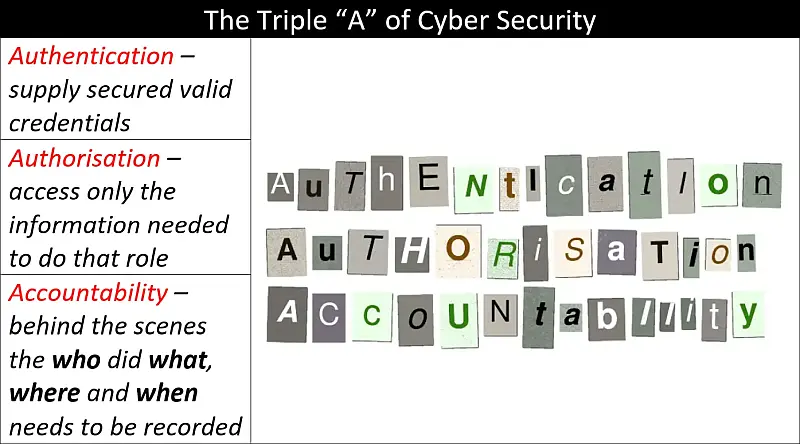Authentication, Authorisation and Accountability (AAA) and The Principle of Least Privilege (PoLP) come together in this primer to give you a basic understanding of the importance of knowing who is accessing your information and how much they can access. Another important idea covered here is what happens when something goes …
Keep It Simple… Encryption (pt. 1)
Today we are going to look at one of the quickest ways any organisation (that uses Microsoft 365) can enhance its cyber security – encryption. Why encryption? I was leading a Cyber Security Awareness course last week and one of the first things we discussed was best practice when it …
What the “Principle of Least Privilege” does for you? (pt. 1)
This article follows on from last week’s Why the “Principle of Least Privilege” works and something for free…. If you want the something for free, then you had better read that article first! Let’s start with a simple definition. The Principle of Least Privilege (PoLP) is a fundamental concept in …
Continue reading “What the “Principle of Least Privilege” does for you? (pt. 1)”
Why the “Principle of Least Privilege” works and something for free…
The Principle of Least Privilege (PoLP) is a fundamental concept in cybersecurity. It ensures that users are granted only the minimum necessary access rights required to perform their job functions. This principle is one I always enforce in cyber security as it is a powerful way of defending the most …
Continue reading “Why the “Principle of Least Privilege” works and something for free…”
Sometimes a cyber incident is not a cyber attack and what you can do to stop it.
The loss of control of your information and it getting into the public domain is not always a cyber attack – many times it is simply a mistake by your team. It has happened to the Australian telecommunications company Telstra: Telstra sorry for publishing up to 130,000 customers’ details online …
Continue reading “Sometimes a cyber incident is not a cyber attack and what you can do to stop it.”






